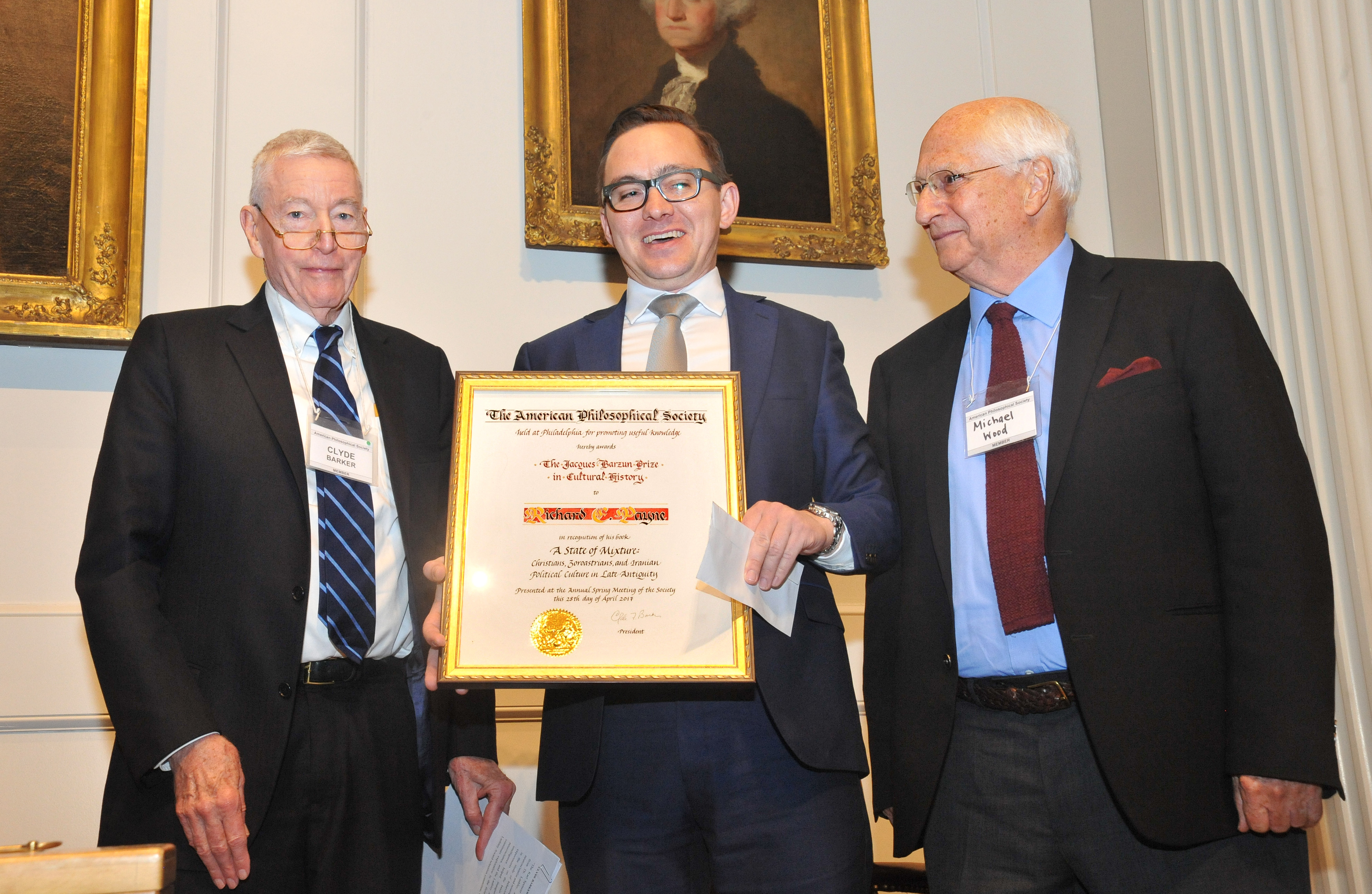2015 Jacques Barzun Prize

2015 award to be presented in April 2017
Richard E. Payne
The American Philosophical Society is pleased to present the 2015 Jacques Barzun Prize in Cultural History to Richard E. Payne in recognition of his book A State of Mixture: Christians, Zoroastrians, and Iranian Political Culture in Late Antiquity (University of California Press).
The title of this learned and intensely researched volume comes from the period under study. It refers to the second of 'three successive three-thousand year stages' through which Zoroastrian religion pictured world history. After a first stage of ideal creation occurred an era of struggle with evil in which humans were still caught. It was their task to work toward the coming of the third stage, which would end history and restore perfection. But the title also has another meaning, contemporary with the writer and his readers, that not only evokes a religious and political mixture where scholars have mostly seen sectarian division and violence, but points to the positive values of the mixture. This is a 'Christian success' in a steadfastly Zoroastrian world, a matter of 'East Syrian secular and ecclesiastical leaders... acquiring wealth, forming relationships with imperial authorities and establishing religious institutions that transmitted their sources of economic and political capital across generations'. There is a paradox here, and that is what the book explores in persuasive detail. How could a Zoroastrian emperor succeed in 'elevating and suppressing Christianity' at the same time? How could Christians flourish in a world that was famous for persecuting them? Professor Payne does not underplay the violence and difficulty of many moments in this history, but he shows, through a close examination of Zoroastrian theology, Christian legend and law, and the common uses of symbols of power, that there was an authentic 'synergy between Christian and Iranian institutions', and suggests that 'the legacy of the politics of mixture extended well beyond the frontiers of the Iranian world'. There is much for us to learn from this account of 'the construction of an identity' that was shared by groups 'with irresolvable religious differences'.
Richard E. Payne, a historian of the Iranian world in late antiquity, ca. 200-800 CE, is Neubauer Family Assistant Professor in the Department of Near Eastern Languages and Civilizations at the University of Chicago. He completed a doctorate in history at Princeton University. He was awarded the Bliss Prize from Dumbarton Oaks, the Crisp Fellowship from Phi Beta Kappa, a research fellowship from the German Academic Exchange Service (DAAD), and a visiting research scholarship from the Institute for the Study of the Ancient World at New York University. He was elected a research fellow of Trinity College, University of Cambridge. He joined the University of Chicago faculty in 2013.
The Barzun Prize selection committee consisted of Michael Wood (chair), Charles Barnwell Straut Professor of English and Comparative Literature, Princeton University; Glen W. Bowersock, Professor Emeritus of Ancient History, Institute for Advanced Study; and Jeffrey Hamburger, Kuno Francke Professor of German Art & Culture, Harvard University.
